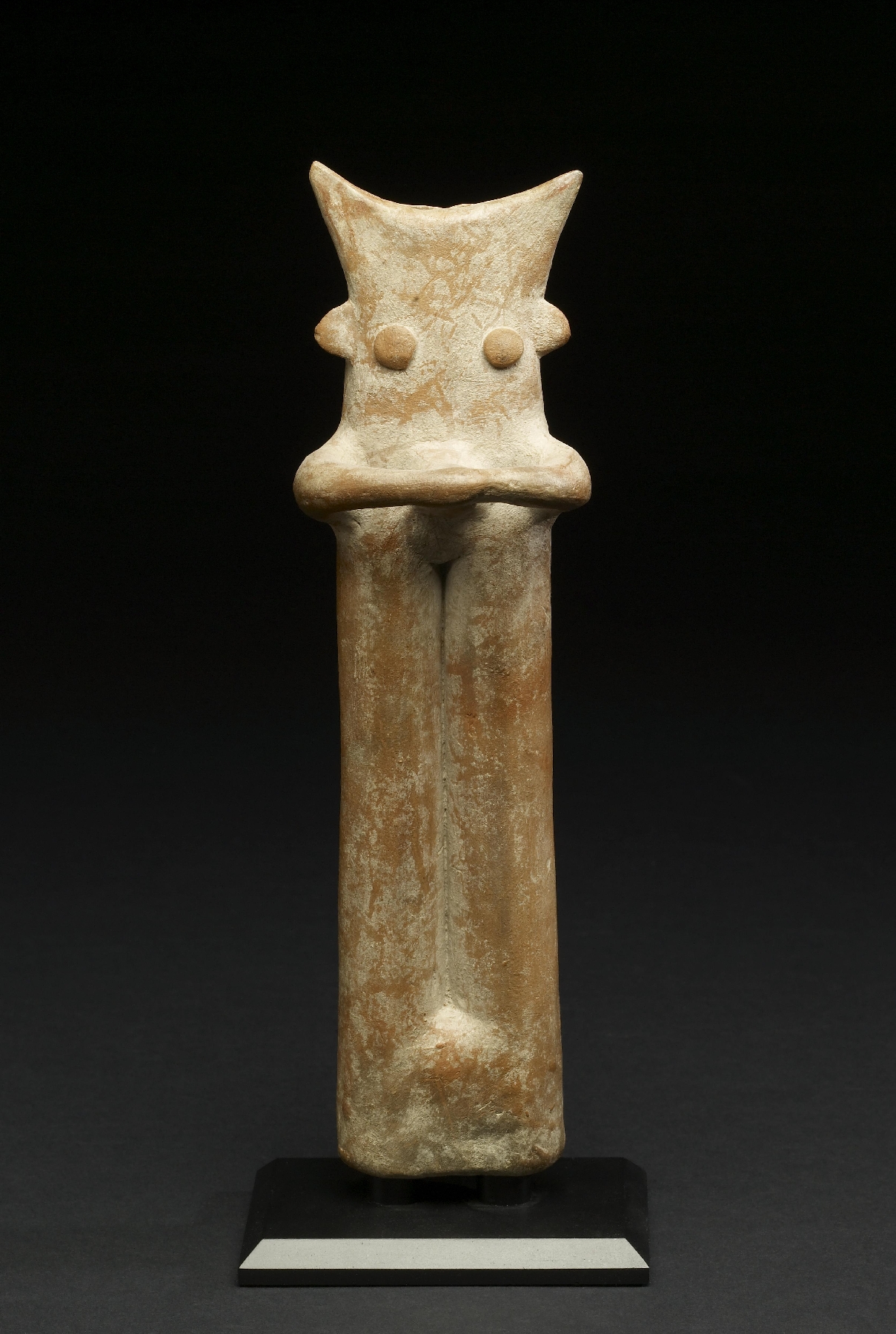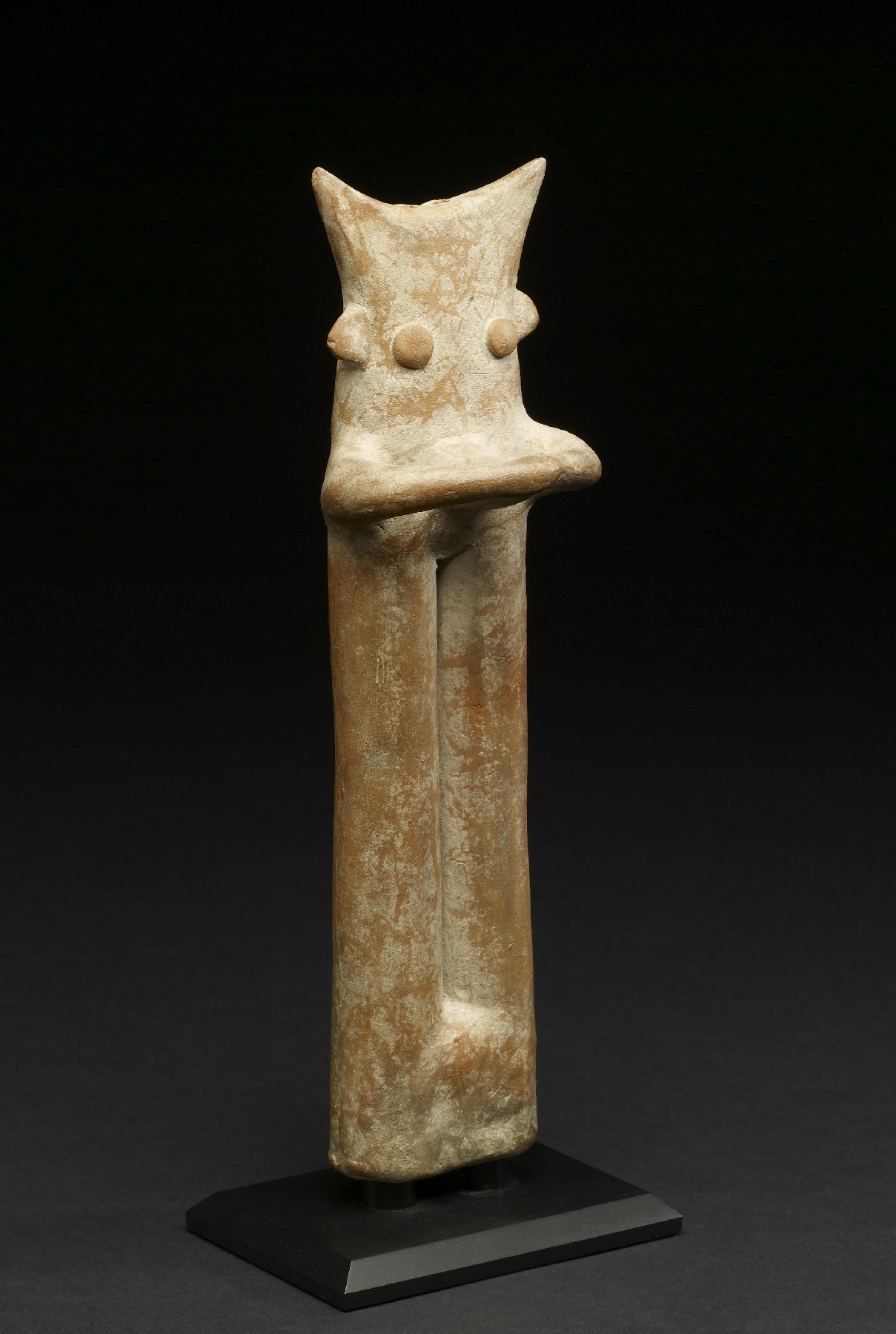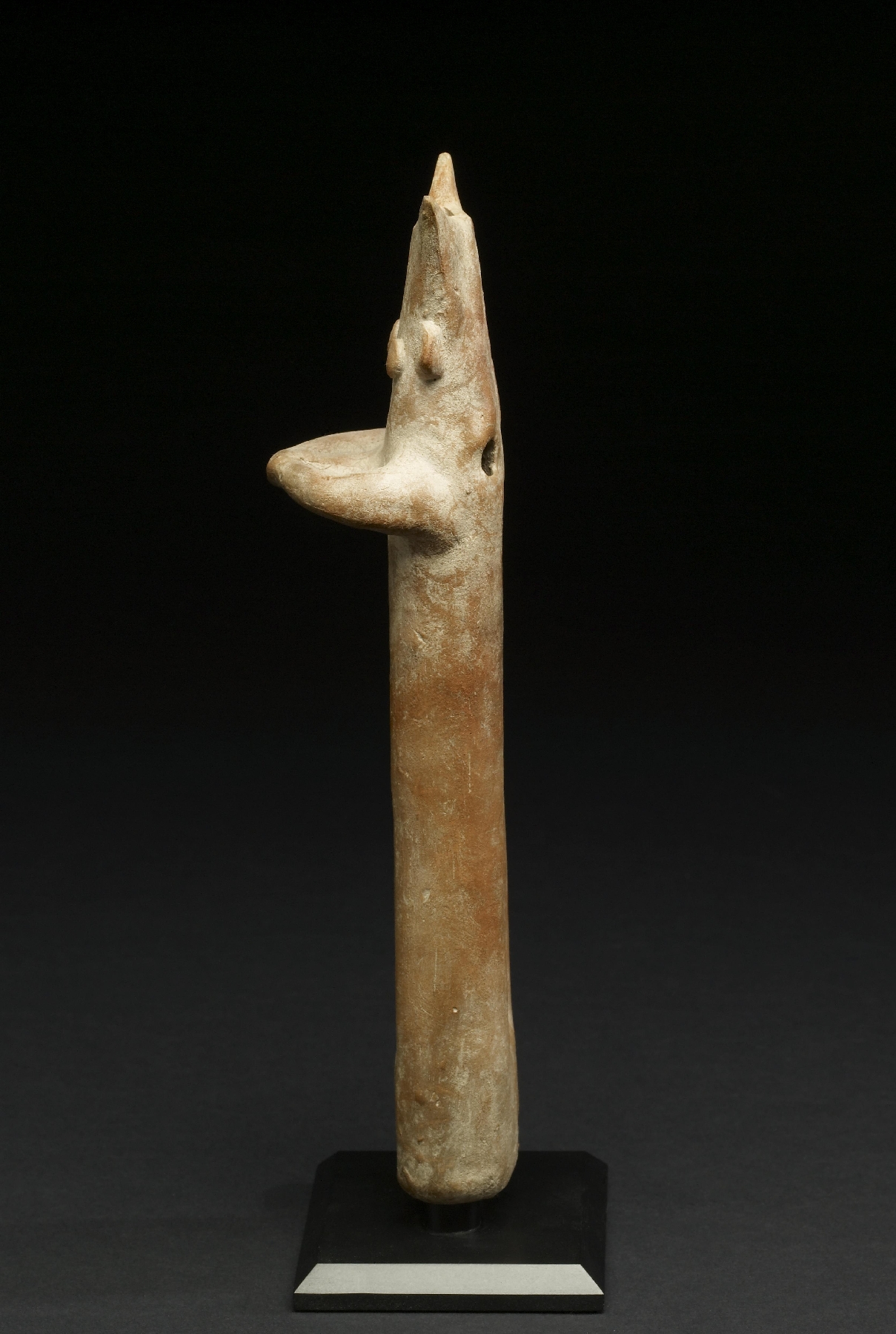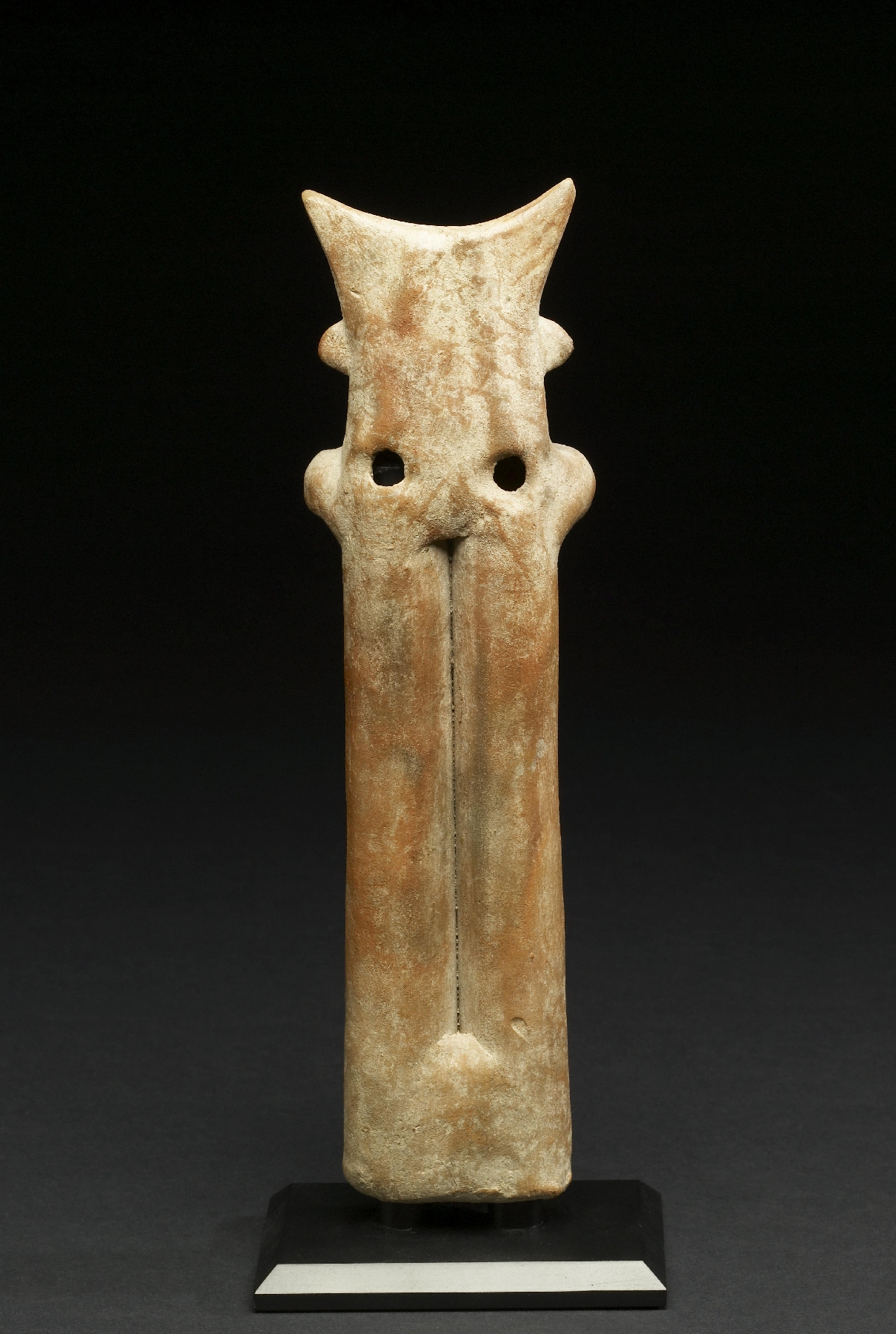Double-chambered Tubular Duct Flute
(Ancient Americas )
Tubular duct flutes in the collection illustrate the variety of aerophones that typify the musical instrument repertoire of different societies during Late Classic times in Mesoamerica. They share the modeling of the human figure as their primary decorative program, but these range from the dramatic naturalism of near portraiture seen on the Veracruz or Maya flute (TL.2009.20.135), to the schematized portrayal on the fluted instrument, and ending with the extreme minimalism of the figural rendering on this double-chambered flute from Colima. Each instrument holds its unique potential for creating a variety of tones and sounds of different timbres, depending on the force of wind entering the mouthpiece and sound chamber(s) as well as the positioning of the player's fingers (when applicable). Although the casual musician can produce acceptable sounds from these instruments, practiced skill is required to achieve their full effect.
Provenance
Provenance (from the French provenir, 'to come from/forth') is the chronology of the ownership, custody, or location of a historical object.
Acquired by John G. Bourne, Santa Fe, New Mexico; given to Walters Art Museum, 2013.
Exhibitions
| 2012-2013 | Exploring Art of the Ancient Americas: The John Bourne Collection Gift. The Walters Art Museum, Baltimore; Frist Center for the Visual Arts, Nashville. |
Geographies
Mexico, Colima (Place of Origin)
Measurements
H: 9 1/8 x W: 2 9/16 x D: 2 1/8 in. (23.2 x 6.5 x 5.4 cm)
Credit Line
Gift of John G. Bourne, 2013
Location in Museum
Not on view
Accession Number
In libraries, galleries, museums, and archives, an accession number is a unique identifier assigned to each object in the collection.
In libraries, galleries, museums, and archives, an accession number is a unique identifier assigned to each object in the collection.
2009.20.102








